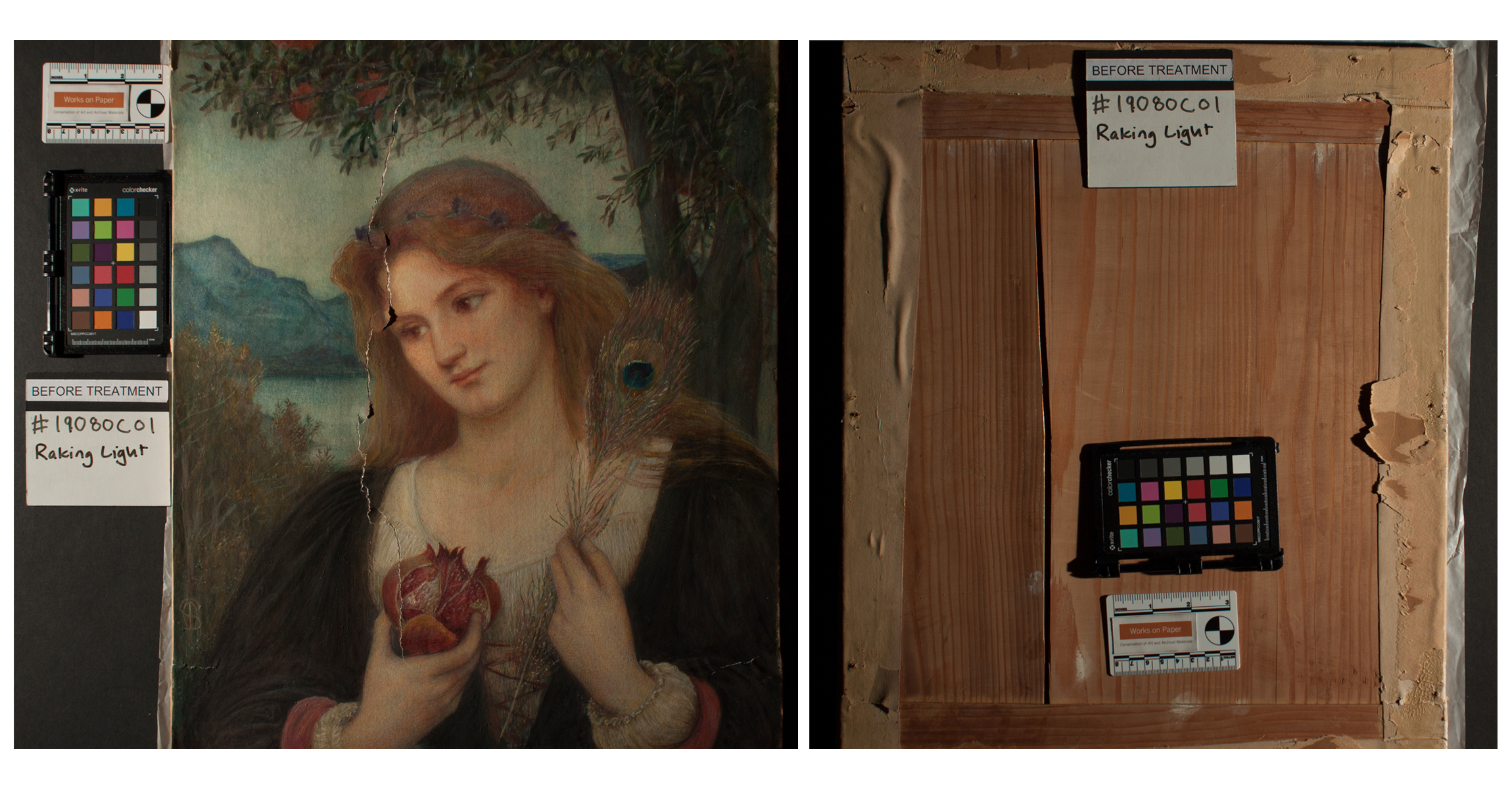 Eustis Estate
Eustis Estate
Stillman conservation

Historic New England objects conservator Michaela Neiro supervised the conservation treatment and stabilization of this exhibition’s paintings and frames over a period of two years. The Conservator’s Notebook features explanations and insights that Michaela has drawn from her project notebook, including close-up photographs showing how the work was done.
This painting was made using materials that were typical to Marie Stillman but unique for her time period. The substrate was prepared more like it would be for an oil or tempera painting than for a watercolor. The heavyweight paper was laminated to another similar weight paper, then wrapped around a wooden panel with a main vertical center board and thinner horizontal boards adhered to the top and bottom (breadboard construction). The media Stillman used were watercolor, gouache, and likely water glass (sodium silicate), with oxgall added to some pigments.
Likely due to a sudden and dramatic change in relative humidity, the panel cracked, creating a 15-inch vertical crack in the panel and therefore a related complex tear in the painted paper. Because the media is very water-sensitive and the construction of the paper around the panel is original to the artist, the decision was made to conserve the tear from the front of the artwork, leaving the paper on the board intact.

